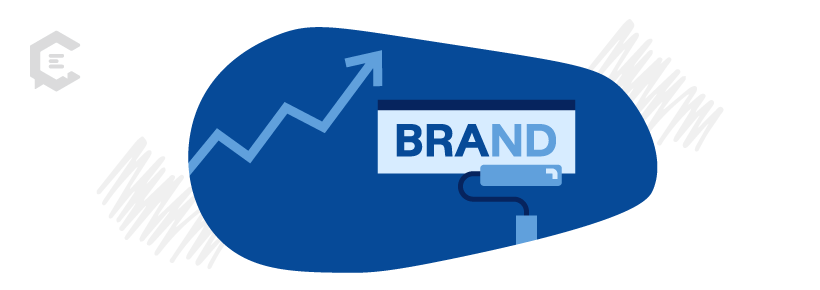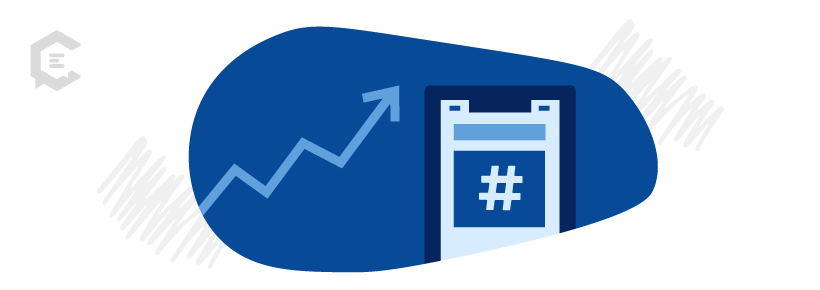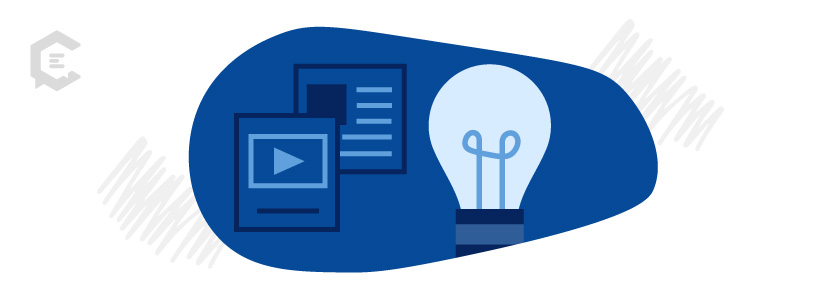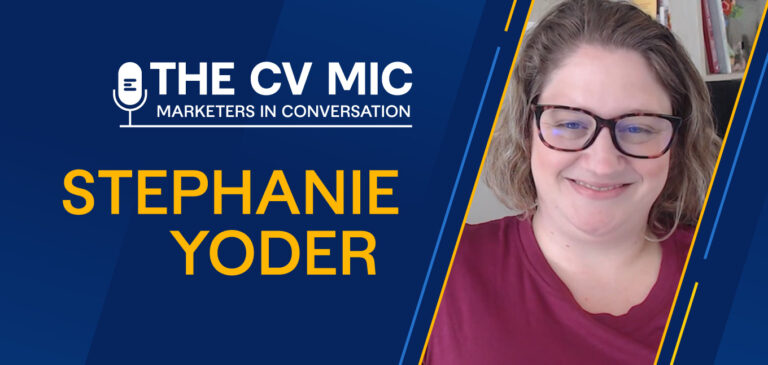Content marketing trends. They evolve. It happens regularly. We know this! But for B2B marketers and large enterprises, the cost of lagging behind the content marketing trend curve is too massive to ignore.
To help you keep up with the times, here is a compilation of the top 15 trends in content marketing that will shape the industry in 2025 and beyond.
Let’s get started.
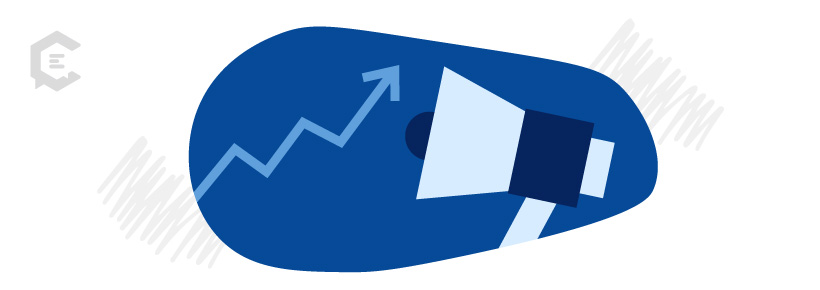
Emerging content marketing trends
1. AI-assisted content
Artificial intelligence (AI) is far from being able to produce highly polished, full-length content without human input. However, the technology can assist with content ideation, outline creation, and proofreading. And it’s not going anywhere anytime soon.
There is a trend in content marketing of teams using platforms like Writesonic and Jasper.ai, as well as content professionals, to speed up content creation. But with the glaring mistakes seen from AI-generated content, content experts still need to handle much of the writing and editing to ensure quality and brand alignment.
2. Podcasts
The demand for podcasts continues to grow.
In 2022, there were about 98.4 million U.S. podcast listeners. By the end of 2026, the figure is expected to balloon to 119 million.
Considering the increase in podcast listeners, it’s a logical outcome for businesses to invest in podcasts.
Podcasts are perfect for relationship building, providing value to listeners, selling, increasing brand visibility, and establishing brand authority. If you’re looking to start your podcast, consider using the podcast topics below:
- Industry trends and news
- How-to tips
- Case studies
- Leader interviews
- Start-up stories
To get more mileage out of your content, consider repurposing the content pieces you publish.
If you received massive engagements out of a social media post you published, consider creating a podcast out of that as well. After all, the massive social engagement you received is a validation that your audience is interested in learning more about the topic you posted about.
3. First-party data collection
Google may have extended support for third-party cookies until 2025. However, businesses are already scrambling to incorporate first-party data collection in their marketing.
Some of the ways to collect first-party data are:
- Running surveys
- Reviewing details from on-site user registrations
- Event-based tracking
- Analyzing customer purchase history
With first-party data, organizations can future-proof their content marketing with a reliable supply of accurate audience data. This enables data-driven decisions in creating landing pages, registration processes, and website copy.
4. Hybrid marketing experiences
Event marketing has returned as one of the top marketing trends and one of the most effective.
90% of event organizers think all large-scale events will be remote or hybrid over the next two years.
5. Omnichannel marketing
Big businesses run digital marketing campaigns that never sleep.
As such, omnichannel marketing includes strategies outside traditional touch points—from social media ads to emails. This includes instant messaging, mobile push notifications, and standard (offline) marketing.
6. Self-guided B2B buying journeys
Data from McKinsey reveals that 77 percent of B2B buyers are comfortable spending up to $50,000 on self-service or remote purchases. On the other hand, 27 percent are willing to stake up to $500,000.
That’s why B2B marketers should shift their focus to content pieces that accelerate the self-guided buyer’s journey, especially for products and services requiring much research.
B2B organizations must also consider how content pieces fit different sales funnel stages. For example, create and optimize top-of-the-funnel content for a wider audience. Meanwhile, tailor bottom-of-the-funnel content to each prospect’s specific objectives and preferences.
Brand identity content marketing trends
7. Fun and relatable content
Content fatigue is an obstacle that content marketers contend with. Overwhelmed by the information onslaught, internet users often ignore content because they are overwhelmed and drained of their bandwidth to take in complex ideas. That’s why fun and relatable content is gaining traction.
Even businesses in seemingly dull industries (I use “dull” for lack of a better word) are looking for ways to create fun content for their users.
Memes are a great example. Despite their fun nature, companies use memes to illustrate user pain points and their solutions, no matter how business-like or humorless the solutions might be.
The best part is that studies show that over 60% of people are likelier to buy from companies that use memes. That means companies can add an element of fun and lightheartedness to their brand image while still selling effectively.
Other fun and relatable content pieces you can use are:
- Short, funny videos
- Comic strips
- Jokes
- Games
8. Awareness-driven reputation management
Customers care about the causes they support more than ever — so much so that it affects their purchase decisions.
Accordingly, businesses benefit from incorporating social responsibility and awareness into their marketing initiatives. This can be done in several ways, like supporting charitable causes and using inclusive language.
9. Commitment to data privacy
Ever-growing concerns over user privacy make it vital for enterprises to provide reassurance whenever they gather data through content marketing. A typical use case is in promotional content, like white papers, industry reports, and ebooks, that require users to provide basic contact information.
Social media content marketing trends
10. Using Threads for content marketing
Threads is a social media marketing platform launched by Meta Platforms on July 5, 2023. According to Mark Zuckerberg, Threads passed over 5 million sign-ups in the first four hours. And in just 4-6 days, it garnered over 100 million users. As of October 2024, it has over 175 million monthly active users.
The traction the new social media platform garnered is quite outstanding, especially considering that Instagram took close to three years to achieve its 100 million users milestone. The figure highlights the potential benefits that Threads can bring to businesses.
Since Threads is far less competitive than other established social media sites, businesses can double down on their content marketing efforts to leverage First Mover Advantage.
Some of the best content pieces that Threads users can publish are:
- Before and after photos
- Versus-type content to stir engagement
- Polls
- Company updates
11. Short-form videos
The demand for short-form videos reached nauseous heights with the explosion of platforms like TikTok, Instagram Reels, and YouTube Shorts — with no signs of slowing down.
Short-form videos give users bite-sized information and entertainment. Hubspot reports that short-form videos have the highest ROI of all social media content.
12. The rise of TikTok ads
A study commissioned by TikTok, in partnership with data analytics company Kantar, revealed that ads on their network are 10 percent more attention-grabbing than other social networks. The study also showed that TikTok ads are 21 percent more trend-setting than those published on other platforms.
TikTok led the rise of short-form videos, particularly during the pandemic. Content on that platform is perceived as more authentic and relatable, especially when using native features like filters, free background sounds, and hashtags.
13. Content with strong hooks
Due to generative AI’s rapid content creation capabilities, social media is overflowing with content.
According to Insider Intelligence, 76% of marketers use generative AI for basic content creation. The waterfall-like influx of new content makes using compelling hooks essential for businesses that want to ensure their content is read and not simply scrolled past.
On LinkedIn, for instance, check how captivating the hooks are from its top creators:
- “How to Waste Your Life:” (Published by Dan Koe, Founder of Modern Mastery)
- “10 uncomfortable truths SaaS Executives need to read:” (By Markus Rentsch, CEO of Remark-able)
- “This may rub people the wrong way…..” (By Nat Berman, CEO of Uncoached Corp)
If you’re looking for compelling content hook angles, consider the points below:
- Behind-the-scenes
- Mysteries or unresolved stories
- Ask an interesting question
- Share quotes
- Engage your readers with a contest or challenge
- Share a personal story
- Start with a compelling headline
- Comparison or versus content
Before choosing your hooks, consider what’s important to your readers and their peculiarities.
There has to be a substantial overlap between your readers’ dynamics and your marketing or business goals.
If your readers, for example, are in a phase where they’re ready to purchase a product but are unsure which product best fits their needs, using a comparison- or versus-type is likely to work well.
B2B content marketing trends
14. Conversational marketing
B2B buyers need quick answers to progress through their self-guided journeys — at speeds faster than human sales reps can deliver.
This leads to the growing demand for AI-driven conversational marketing tools, particularly chatbots or marketing bots.
Chatbots address frequently asked questions and provide relevant information based on the audience’s query. As a result, B2B buyers don’t have to wait for a sales rep to obtain details to help them make a purchase decision.
15. Increased spending on video content
B2B organizations continue to prioritize videos in their content marketing budgets. In fact, 91% of businesses use videos as a marketing tool, and 89% of consumers want to see more videos from brands. It’s a win-win.
Marketers are also increasingly using AI to help speed up the editing process — 76% have used AI tools to create or edit video content. But a human touch is essential to ensuring quality.
Videos offer a flexible and engaging way to connect with B2B prospects.
With a talented team of scriptwriters and video editors (and perhaps an AI tool or two), B2B organizations can accomplish different marketing goals with various video types, like:
- Explainer videos
- Product demos
- Video interviews
- Pre-recorded online courses
- Video ads
- Thought leadership videos
Content marketing solutions for the ages
No matter the content marketing trend, you need a trustworthy team of content experts to fuel your big business marketing campaigns.
ClearVoice has a network of seasoned, carefully vetted professionals for content marketing of all sizes. You’ll find content strategists, graphic designers, editors, writers, and more — ready to learn about your brand and adapt to the ever-changing content marketing landscape.
Start browsing our diverse talent network or talk to a content specialist today about what we can do for your brand.
